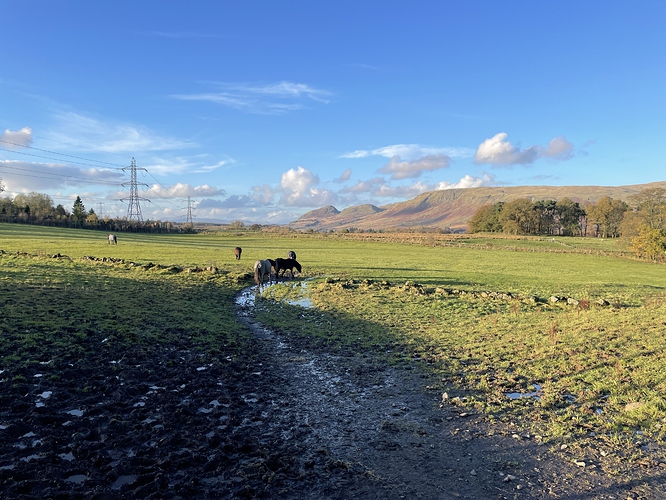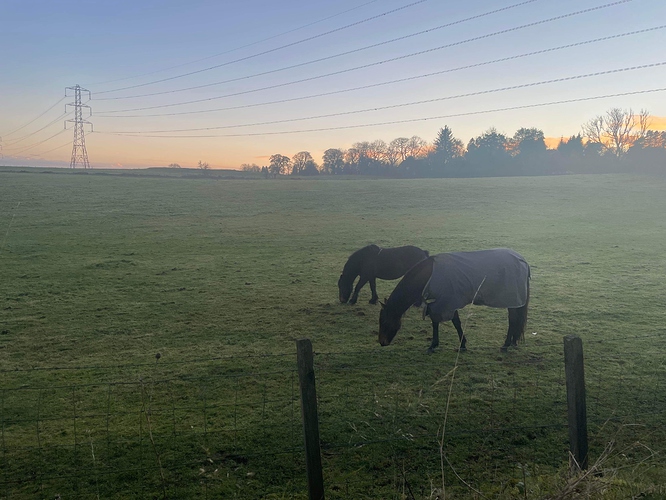In the aforementioned clip with the Iberian stallion, he was using very standard round-penning techniques to move the horse’s feet. He darts quickly towards the horse, with his lunge/driving whip, and turns the horse around a few times. Once the horse starts paying more attention to him, he backs off the pressure and eventually gets what other people might call the join-up, where the horse follows the trainer around without a leadrope. I assume so, anyway, given the jump cut between him driving the horse and then drawing the horse in. Many, many trainers, in many countries, have employed similar techniques to deal with rank horses.
As an aside, Iberian horses, in my experience of n-equals-1, have a strong inclination towards the draw, stronger than other breeds of horses I have worked with. This might not have taken Hempfling very long. It also might be why you see lots of them in liberty work.
It takes timing and feel, more than charisma, to do it well. Hempfling – and the OP – are far from the first people to espouse that join-up (or whatever you want to call it) is a way of proving to the horse that you possess leadership qualities. As someone mentioned in another post, some researchers got horses to join-up with RC cars, pretty much disproving the leadership/charisma hypothesis. Instead, the study suggested that the horses learned through operant conditioning how to get the trainer/RC car to stop chasing them. In other words, pressure-release taught the horses to follow the cars. Teaching the draw and drive can still be very useful at times (for working on attentiveness, liberty work if that’s your thing, improving hard-to-catch horses), but we need to be honest about what we are doing.
Back in the late 1990s, when I was first taught join-up, the trainer said, “It’s how horses show dominance with each other.” That theory has also been debunked. Researchers paired dominant broodmares with unrelated yearlings and put them in a round pen. The broodmares did not chase the yearlings around and around until the yearlings showed whatever humans interpreted as signs of submission. Most of the subjects just mooched quietly around the round pen.
There’s been more ethological studies of domestic and wild herds, which shows that ‘dominance’ is an incorrect interpretation of agonistic behaviour, even when integrating new members into the herd. Frequent and aggressive chasing (unless we are talking about stallions trying to take posession of mares) has more to do with resource guarding than dominance.
Here are my own ethological observations on that point. Going back to the 1990s/early 2000s, I was boarding at a barn in Colorado that had herds of horses on drylots, with piles of hay scattered about. The NH trainers who were popular at the time said that established herd members will keep a newbie at a distance for some time, until the newbie has shown sufficient humility to be allowed into the herd. And indeed, we could observe this when new boarders came into the group. When the trainer said that’s what we must emulate in the round pen, we thought it made sense.
Fast-forwarding to now, I live in Scotland, and my horses are turned out on pastures with seemingly limitless grass. When a new horse goes into the herd, there might be a little bit of running around and squealing, but so long as the newbie has reasonable social skills, it’s usually quite civilized. And you can look at that herd like an hour later, and the newbie will have made friends and will be grazing with the others, not miles away on the outskirts of the group.
Humans need to be careful about applying our anthrocentric ideas of dominance and hierarchy to horses. With what we know now (not just me…people way more professional than me), it’s highly probable that the CO horses on the drylot were guarding their hay, which seemed like a finite resource, from newcomers. The more aggressive horses got the best hay access. New horses had to work out where they stood, and who they could push off a hay pile with the fewest consequences. The horses in the Scottish field, on the other hand, don’t feel like they have to defend their food source because it seems unlimited. Therefore there is usually less aggression and less ‘keeping the new guy out of the herd’ behaviour.
The two photos show my youngster going into the herd at a new yard. She’s the horse in the grey rug. First photo was right when I turned her out, and the second one was taken a couple hours later.




